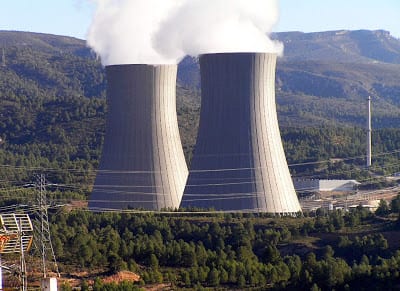By Jon Clarke in Braunschweig
IT’S rare to come across a building that feels so completely right.
In terms of functionality and form, the Study House, at Braunschweig’s Technical University, ticked so many boxes for me.
Set alongside the city’s river, it emerges suddenly from a copse of trees, which almost mask its ingenious intentions.

Fundamentally a large glass box, as you look closer you realise its two floors are being brilliantly utilised.
The architects and their commissioners couldn’t have dreamed of seeing their building being better used…on both levels and from every available space.
It was as if they had paid the 100 or more students to set up their laptops and throw their books, notepads and water bottles onto desks, knowing a journalist was making a visit.
Inhabiting every available space of this wonderful building, some on their own, some in groups, they were clearly finding it of use.

German university campus and Barcelona library are winning designs at Europe’s top architect awards
A few chatted quietly, while most were deep in thought getting on with their studies, with a quiet hubbub in the background.
Those that needed total silence climbed out onto the dozen or so balconies, or at desks on the ground level, outside.
The overall feeling was one of peace and sustainability, particularly with nature enveloping the building at every opportunity.
I spoke to a few of the students and discovered them extremely happy with the pavilion, which has also won prizes locally in Germany.
One girl, just 18, told me she was not even attending the university and had her final school exams coming up in the next few weeks.

“It is a really inspiring space to work and hopefully I’ll do well enough to get in to study here in September,” she explained. Now that’s an accolade.
The German design double act of Dusing and Hacke, who trained in London, were inspired by toy sets from Meccano (Marklin in Germany).
Everything is bolted or screwed together, rather than welded or glued and the frame is made of 10cm wide hollow steel sections which contain all the wiring, lighting and sockets, as well as rainwater guttering.
The first floor is designed to be a ‘series of islands’ connected by bridges, creating separate study zones, some open plan overlooking the action below, while others are withdrawn and more intimate.

The desks around the edge feel almost suspended in the trees and are inspirational in the extreme.
The staircases inside and out create drama and interesting lines. “It’s a bit like nesting,” explained Dusing. “Students can come in and find their spot.”
There is no front or back, but nine equal entrances around the 1,000 square metre structure, making it feel like an open hub, accessible from all directions, even from the footpath along the nearby river, from where I entered.










It is also more than welcoming to members of the public, too, as long as they are quiet, while some students have adapted the structure in certain ways, with one stringing up a hammock.
“It should feel like an extension of the living room,” explains Hacke, clearly delighted. “They come here to eat and play cards, as well as work.”
The judges ruled the Study House was ‘more than a building’, a ‘versatile system, merging technological inventions with flexible and reusable principles’.
I wouldn’t change a thing if this is how the end users feel about it.








